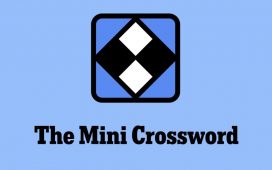
Stranger Things, Bandersnatch, GLOW—the ‘80s are in, and the tabletop world isn’t immune to this cultural wave. Yet another piece of ‘80s gaming nostalgia has now been unleashed, this one made of hulking plastic topped with a sinister skull.
Fireball Island is certainly an artifact of its time, boasting an over-the-top Indiana Jones-like goal of nabbing an idol while avoiding molten balls of fury. In 1986, this was something special. It did little to inspire as a game, as it was largely a roll-and-move exercise in repetition, but its physicality and toy-like nature created a true experience. It was something to behold, if not to play.
Restoration Games has now re-imagined this aging design, dusting off the jagged cliffs and sheltered nooks in an attempt to freshen the whole thing up. The challenge of modernizing without blunting the nostalgic character of a game like this is a tough one—did Restoration succeed?
The nuts and bolts of Vul-Kar
In the new version of Fireball Island, gameplay has switched from roll-and-move to a card-based action system. You choose to play one card per turn (from your hand of two cards), which determines your movement points and perhaps triggers a special power, such as flicking ember marbles from their perches or rotating the island’s plastic palm trees in order to redirect future falling fireballs.
You can’t backtrack or stall here—this is a game of momentum and constant action. Your character darts around paths, across bridges, and up ladders to grab the many treasure tiles scattered about. You can also pass special “photograph” spaces in order to snap a quick picture and receive one of the landscape cards as a bonus. The final way to score points is to seize the mighty heart of Vul-Kar, a plastic gem sitting at the base of the foul demon skull. This is worth more than other options, but the downside is that the heart of Vul-Kar can be stolen by any other player who passes through your space. Once taken, the gem creates an ongoing game of “reverse tag” that can alter your movement plans, depending on the proximity of the heart.
At some point, as you’re running about the island and stuffing your pants full of treasure, someone will play a Cataclysm card. This is the main event—Fireball Island’s crowd pleaser. A Cataclysm allows the player to drop a small number of cinders (marbles) through the black hole of Vul-Kar’s noggin, and the blazing balls then exit his jaw from one of three randomized chutes. They fly across the board, bouncing over hills and felling adventurers; it’s chaos, pure and plastic and kinetic.
There’s a clever pacing mechanism here, as Vul-Kar’s vomited marbles increase over time. In the early going you’ll only drop a single cylinder through his maw, but by the end of play you’ll be launching several—and unleashing a great deal of tumult.
The game’s climax occurs after 45 minutes of jostling with your fellow trespassers and amassing loot and photographs. Once a player has snapped photographs of three different areas, the race is on. Everyone makes a beeline for the exit and hops aboard the “hello-copter” (yes, that’s what it’s really called) to tally their final scores.
A hollow volcano of nostalgia?
Typically, a novelty game like this is best left in the proverbial closet, where it will continue to appreciate in value. (Original editions of Fireball Island can now command several hundred dollars on the secondary market.) In some respects, revitalizing this monstrosity proves the point.
Without nostalgia to fall back on, a hobby gamer familiar with modern offerings may struggle to find the joy here. Those looking for a nuanced strategic experience will not find one. The new version of the game has improved from its roll-and-move origins, offering a bit of player agency as you decide which of two cards to play, but there’s not much “meat” here.
The physical production is also uneven. The island now is plastic and has been split into three pieces. On the whole, it looks damn good on the table, with Vul-Kar menacing on the peak and glaring over the broken topography below, but you’ll notice a painted surface chipped here or misaligned there. A slightly warped bottom lip is not uncommon. The palm trees used as flippers to redirect marbles often don’t do much. When the board is jostled, pieces tend to dislodge, requiring cleanup. Finally, packing the game up can prove challenging; you have to carefully fit the pieces together in order to even close the flimsy lid.
But if you can approach the game with carefree enthusiasm, you may discover the simple joy of toy melding with game to create something superior to its individual parts. Despite its issues, the game remains a physical presence to behold. The island sits as a hulking relic atop your table. It will absolutely enrapture a child, and it does a good job of capturing the attention of a wide range of participants with simple rules and its stylish presence.
As a lighter, family-weight game, the new Fireball Island largely succeeds. It offers a modern take on the classic concept with breezy play. There are plenty of standup, fist-pumping moments as destruction rains down from Vul-Kar, and even those too young to read the cards can still participate with a little guidance.
If this sounds like your kind of game, you’ll be happy to hear that the new edition has launched with a truly excessive amount of expansion content. Most visually impressive is the swanky pirate ship in The Wreck of the Crimson Cutlass, which offers a new area to explore and new treasure to plunder. Most practical, however, is The Last Adventurer, which adds the option for a fifth player along with some finicky snake marbles and a hilarious foam boulder. (None of these additions are necessary, however, and some even clutter up the experience.)
The 2018 Fireball Island is absolutely faithful to the spirit of 1986. It remains full of energy while using its few gameplay mechanisms in a more modern way. It’s not a radical overhaul, and prospective players should be aware of its limitations. But if those limitations work for you, this one shines—and offers an experience the entire household can enjoy.






